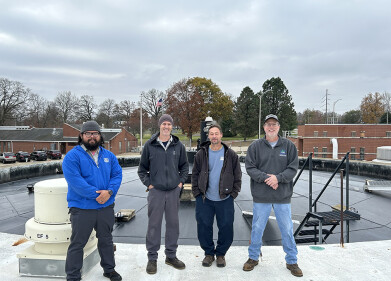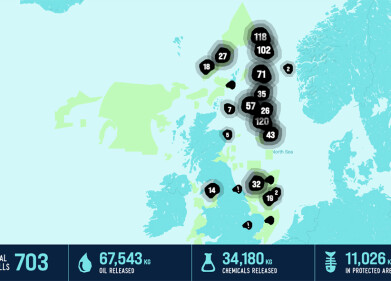Water/Wastewater
Recharged aquifers show how to create valuable water bank for community and industry use
Apr 23 2009
At the centre of the driest inhabited continent on earth, the city of Alice Springs continues to exhibit the Australian pioneering spirit with an astounding example of water conservation and re-use.
This isolated Outback city of 25,000, located nearly 1000km from the nearest coastline, receives just 270mm of rainfall a year, or a fraction of that falling on coastal State and Territory capitals*. So when the new $10.4 million Alice Springs Water Re-Use Project officially began operating this year, it was of considerable interest to conservationists, horticulturalists, farmers, industrialists, miners and urban planners alike. “The project is outstanding in its own right socially, architecturally and technically. It will reveal valuable lessons for all big users of water,” says Steve Van Smaalen, Project Manager for technology provider Eimco Water Technologies-AJM Environmental Services (EWT-AJM). “Increasingly, the future of major municipal, farm, factory and mine projects are bound up with community concerns to achieve the highest standards of water conservation and re-use and the best and most cost-efficient purification standards when recycling.” The project - undertaken by the NT Power and Water Corporation with input from the CSIRO - will stop dry weather overflows from the Alice Springs wastewater stabilisation ponds into the Ilparpa swamp. Rather than letting precious water go to waste, the effluent will be recycled so it can be reused. Initially the project will recycle 600 megalitres of water a year – equivalent to 1200 average backyard swimming pools - and pump it more than 6km down to the region’s Arid Zone Research Institute. There it will be stored underground in aquifers before being used to irrigate horticulture projects, helping create employment and economic opportunities for the region. AJM was awarded a contract by the Power and Water Corporation (PWC) to design, supply, install and commission a 6ML/D water reclamation plant in Alice Springs, NT. AJM supplied an ENVIRODAF 45000, a TOM1200 SUREBLEND polymer system, chemical dosing systems, pumps and reticulated services. This technology is widely used in municipal and industrial projects. The AJM EnviroDAF™ system is designed with a unique Counter Current Dissolved Air Flotation (DAF) system to help overcome some of the problems encountered with traditional older-style Dissolved Air Flotation (DAF) systems. This counter current system eliminates the common problem of sludge carryover under high or irregular loadings, without the need for operator intervention. AJM SureBlend® is a fully automatic polymer blending and make-up system that has been designed for heavy-duty industrial applications. SureBlend® is also designed to operate trouble-free without any need for regular operator attendance. SureBlend®’s automatic operation does away with messy installations and continual cleaning and hosing associated with manual systems. Alice Springs Process The algae rich raw water is fed into the plant from existing waste stabilisation ponds. Neutralisation, coagulation, polymerisation and aeration results in flocculation below. Sludge is then removed at a rate of 2-5 m3/h. Sludge is then removed at a rate of 2-5 m3/h. Clarified water at a rate of 3-6ML/D is produced, followed by chlorination. “The results achieved by the project were important for two main reasons,” says Mr van Smaalen. “Firstly, it was important to eliminate local swamp land contamination from overflows of the existing evaporation lagoons. But equally important is the creation of quality non-potable water for water banking, or aquifer recharge. “The main purpose of aquifer recharge is to store excess water for later use, while improving water quality by recharging the aquifer with high quality water. If groundwater is too salty for use, then the addition of a fresher, recycled water supply will displace the saltier groundwater. “The method increases water storage in the aquifer, to make more water available for irrigation and other uses and also to preserve water levels in wetlands that are maintained by groundwater. “Groundwater recharge may also be used to mitigate or control saltwater intrusion into coastal aquifers. “The water withdrawn from the aquifer can be used to irrigate green open spaces, for example parks, ovals and golf courses, which generally use large quantities of water. “It can also be used for other community, farming and industry uses, freeing up valuable supplies of potable water. “These and other possible uses of the water will depend on public acceptance of such schemes, but it has to be a direction in which the community is heading,” he says. Since the initial start up of the plant in Dec 2007, the process has operated trouble-free with excellent results. (See table following)
| Item | Value |
| Raw Water TSS | 170 mg/L |
| Clarified Water TSS | > 5 mg/L |
| Raw Water E.coli per 100ml | 25 |
| Unchlorinated Clarified Water E.coli per 100ml | > 5 |
| Chlorinated Clarified Water E.coli per 100ml | > 5 |
| Raw Water BOD | 1300 mg/L |
| Clarified Water BOD | 5 mg/L |
Events
Apr 15 2025 Moscow, Russia
Apr 21 2025 Shanghai, China
May 11 2025 Vienna, Austria
May 18 2025 Algiers, Algeria
23rd International Water Management Exhibition
May 20 2025 Prague, Czech Republic














